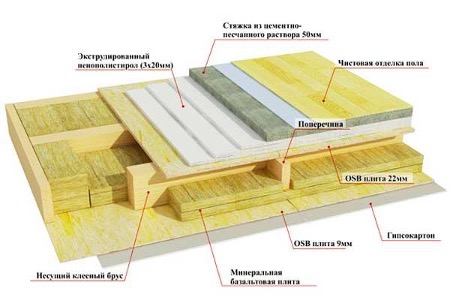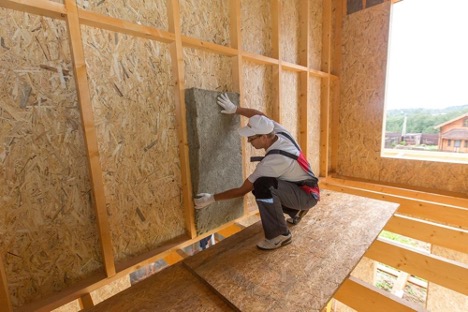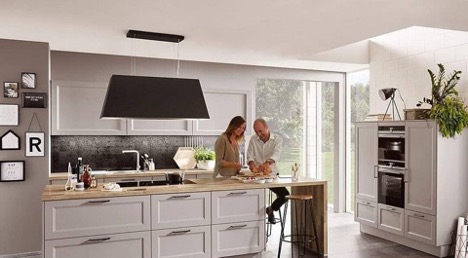Soundproofing a frame house: how to do it, with what materials
Frame houses are popular due to their efficiency, speed of construction and the ability to create a cozy and comfortable space. However, one of the weaknesses of such structures is insufficient sound insulation. Soundproofing a frame house is a task that requires special attention already at the design and construction stage.
The content of the article
Basic principles of sound insulation of frame structures
Noise protection in a frame house is based on principles that should be taken into account when choosing materials and insulation methods:
- the heavier the material, the better its soundproofing properties;
- high density of the material provides better sound insulation;
- Elastic materials absorb sound waves well.
By applying these principles, you can significantly improve sound insulation in a frame house.
How to plan sound insulation in a frame house, what to pay attention to

Planning begins with an analysis of the building's design features and identification of potential noise sources. Proper planning will help create comfortable living conditions and avoid additional costs in the future.
The first step is to conduct an analysis of the building's structure: inspect the walls, floors, ceilings and other elements for possible weak points through which noise can penetrate.
Assess the noise level in different parts of the house, especially if there are noisy highways, industrial facilities or other noise sources nearby.
Selection of materials and technologies
Depending on the design features and noise level, select materials and technologies for soundproofing a frame house. A combination of different materials and methods may be required to achieve optimal results.
Contact a professional for soundproofing advice. Experienced specialists will help you choose the best solutions according to your needs and budget.
Develop a detailed plan for soundproofing work, including deadlines, budget, list of necessary materials and technologies.
When planning soundproofing, do not forget about ventilation and other systems in the house. Properly planned communications will help to avoid noise penetration through ventilation openings and other technological openings.
Carefully monitor the execution of the plan, ensuring high quality work at all stages. This will help avoid additional costs and ensure effective sound insulation of the walls in a frame house, as well as other structural elements.
After completing the work, carry out a sound insulation test to ensure the effectiveness of the solutions used. Make adjustments as necessary to achieve a better result.
Compliance with these recommendations will help you competently plan and effectively carry out soundproofing work in a frame house, creating comfortable living conditions.

Soundproofing materials
The choice of materials for sound insulation is an important stage that affects the comfort of living in the house. There are many materials with good soundproofing properties:
- Mineral wool boards are excellent for soundproofing walls in a frame house and ceilings due to their density and elasticity.
- Basalt wool is also characterized by high sound insulation properties and chemical resistance.
- Soundproofing membranes and tapes are effective in eliminating vibration and reducing noise levels.
- Drywall with a soundproofing layer helps reduce noise and is an excellent solution for soundproofing frame partitions.
Soundproofing of walls and partitions
Soundproofing walls in a frame house begins with installing soundproofing materials between the frame posts. Soundproofing materials are installed to ensure maximum density and avoid gaps through which noise can penetrate.
You can also use a frameless wall soundproofing system, which involves installing soundproofing materials directly on the walls without creating an additional frame. This may be relevant if space in the rooms is limited.
Soundproofing the floor
Soundproofing the floor in a frame house is carried out by laying soundproofing materials under the floor covering. This helps minimize the transmission of impact and acoustic noise between floors.
To effectively soundproof a floor, you can use the following materials:
- soundproofing underlays for laminate or parquet;
- floating floor using soundproofing materials;
- elastic soundproofing mats.
Practical recommendations for sound insulation
Using the right techniques and materials will help create an effective soundproofing system for your home. Here are some useful tips:
- Make sure that all seams and joints of soundproofing materials are properly sealed.
- Use double or triple glazing to improve the sound insulation of windows.
- Avoid violating the integrity of soundproofing layers when installing communications and finishing.
- Consult with professionals to choose the best soundproofing materials and methods for your specific application.
Careful planning and the right choice of materials will help ensure comfort and coziness in your frame house, saving you from unnecessary noise.





